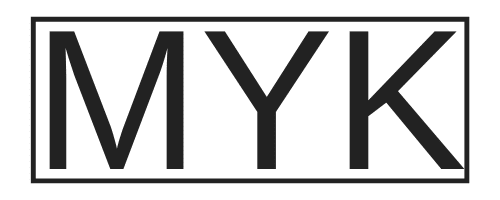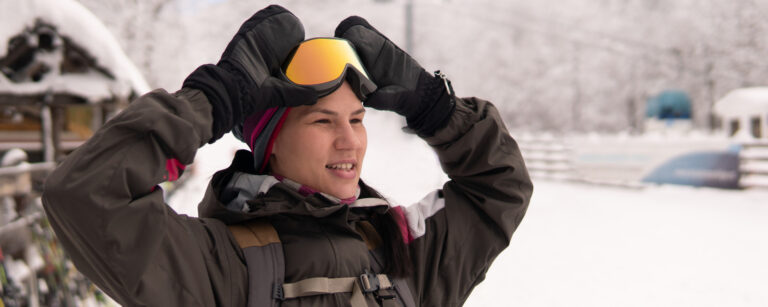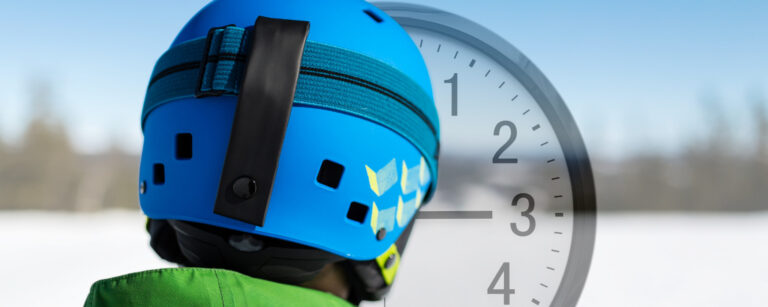5 Essential Hiking Safety Tips for Outdoor Enthusiasts
As an avid hiker with a deep love for the great outdoors, I’ve had the incredible opportunity to explore breathtaking landscapes on multiple continents. Hiking is a passion and a way of life. What’s even more fulfilling is that I’ve been able to share hiking with my children, introducing them to the wonders of nature and the joys of hiking from an early age.
Throughout my many years of hiking, I’ve realized that embracing safety practices is just as essential as appreciating the awe-inspiring vistas and serenity of the trails. The tranquility and adventure of hiking can be truly transformative, but it’s crucial to be well-prepared and educated about the potential risks of nature. In this article, I’ll share some essential hiking safety tips I’ve learned through personal experience, ensuring that you and your loved ones can embark on memorable hiking adventures with confidence and peace of mind.
So, lace up your boots, grab your backpack, and join me as we delve into hiking safety. Whether you’re a seasoned outdoor enthusiast or a beginner eager to explore nature’s wonders, these tips will serve as your guiding light, empowering you to make the most of your hiking journeys while keeping safety at the forefront.
Are you ready? Let’s hit the trail!
Hiking Mindset
The most dangerous situations arise in the outdoors when problems start to compound themselves. It can begin innocently enough, with a minor setback or slight deviation from the original plan. However, when these issues stack up, one suddenly finds themselves in a highly precarious and potentially life-threatening situation.
I had one such experience while skiing last winter. I lost track of where I was in the backcountry and ended above a large cliff band. In an attempt to get back above the cliff, I got sucked down and had to go over the cliff to get down. I was not hurt, I got out safely, but it was a scary moment when I realized I had no choice but to go down. ( I am not the only person this has happened to in the same spot)
I had been in the area many times before, but this was the first time that season. It looked different than I remembered. When I tried to get out, I thought I could traverse/ski my way out; I could not. I should have stopped, removed my skis, and hiked back up.
Your ability to assess risks and adapt to evolving situations is crucial to your safety. You are your safety net, whether hiking or skiing; take precautions and plan for the worst so that you are ready for any situation.
Hiking Safety Tips for the Great Outdoors
Whether you’re a seasoned hiker or a beginner, staying safe on the trails is essential. Here are some tips to help you enjoy the great outdoors while minimizing the risks.
1 – Plan Ahead
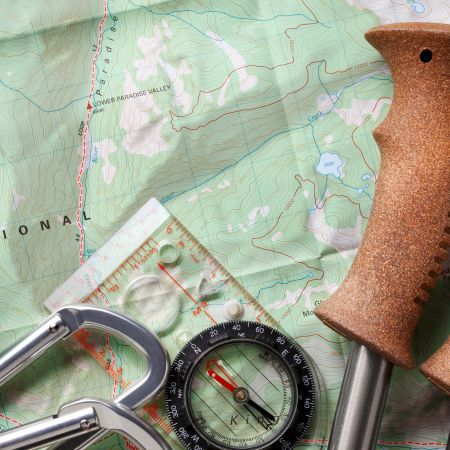
One of the most crucial aspects of hiking safety is thorough planning and communication. Before setting off on a hike, research the chosen trail and understand the difficulty level. Become familiar with the surrounding area and any potential risks. Identify how you will mitigate risks as they arise and know how to get help if needed. Does the area have cell service, or do you need to take a handheld GPS or Sat phone? Establish a clear emergency exit route and know who and how to contact the authorities if you need rescue.
Every member of your party should have a clear idea of the route and hiking plan. Before you leave, clearly communicate your route, departure, and return time to at least one person (a friend or family member). In the event of an emergency, this is how rescue teams will find you.
2 – Check the Weather

Before setting out, knowing the expected weather conditions for your hike is essential. Unpredictable and extreme weather can pose significant risks, so being prepared is vital to ensuring safety.
Check the weather forecast on sites like the National Weather Service or The Weather Channel for accurate forecasts for the area you’ll be exploring. Be vigilant for any looming storms, downpours, high winds, or other conditions that could interfere with your excursion.
- Rain: Pack a rain jacket and waterproof rain gear. Wet trails can become slippery and muddy, increasing the risk of accidents. Before deciding to cross any river or stream, consider that rain can cause them to swell. Do not get trapped on the wrong side of the river.
- Snow: Snowy hikes require extra preparation, such as warm layers and appropriate footwear with good traction. Be cautious when traversing icy areas. Use trekking poles, ice axes, or crampons if necessary.
- Fog: Foggy conditions reduce visibility, making it challenging to navigate trails safely. Ensure you have a map and compass (or GPS device) handy in case you need them while navigating foggy terrain.
- Temperature extremes: Extreme heat can lead to dehydration, while extreme cold poses risks such as hypothermia and frostbite. Dress accordingly based on temperature forecasts for your hiking location.
Keep an eye on the sky and be prepared to change plans or turn back if necessary.
If you’re hiking in remote areas, consider investing in a weather radio that provides real-time updates on weather conditions. This can help inform you of any sudden changes while on the trail.
3 – Pack Appropriately

Packing the right equipment and supplies is essential for a successful and safe hike. Ensure you have essential items like a first aid kit, water, snacks, and suitable clothing. Most major outdoor retailers will carry everything you need.
First Aid Kit
A first aid kit should include adhesive bandages, gauze pads, antiseptic wipes, tweezers, pain relievers (such as ibuprofen), and any personal medications you may need. Accidents can happen while hiking; being prepared with a well-stocked first aid kit can help address minor injuries or medical issues that may arise.
Hydration and Snacks
Proper hydration is vital during any physical activity – especially when hiking in remote areas with limited access to clean drinking water. Bring enough water throughout your hike; experts recommend at least 1 liter per person for every two hours of moderate-intensity activity (National Park Service). A self-cleaning water bottle can be helpful in a pinch (it will purify and allow you to drink water). Pack high-energy snacks like trail mix or energy bars to keep you up during your trek. Make sure to bring extra food and water in case of emergency.
Appropriate Clothing & Footwear
- Dress in layers: This allows you to easily adjust to changing weather conditions or body temperature fluctuations caused by exertion levels.
- Select moisture-wicking fabrics: Avoid cotton materials that absorb sweat and can cause chafing. Opt for synthetic fabrics that wick moisture away from your skin, keeping you dry and comfortable.
- Choose proper footwear: Select hiking boots or shoes with good traction and ankle support. They should have a comfortable fit to prevent blisters or injuries on uneven terrain. Break in new footwear before embarking on long hikes.
Additional Safety Gear
Beyond the essentials mentioned above, consider packing additional safety items such as:
- a map and compass (or GPS device)
- headlamp or flashlight with extra batteries
- emergency whistle
- multi-tool or knife
- fire starter kit (matches/lighter/tinder)
- emergency blanket
These tools can be invaluable in case of unexpected situations during your hike. Ensuring you have the right gear for your trek is vital to having a safe and enjoyable experience.
4 – Stay on The Trail
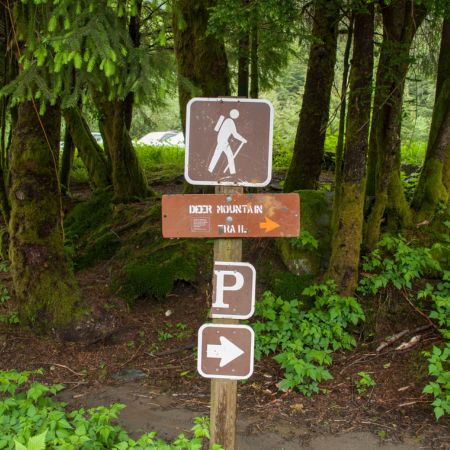
Venturing off the designated path could lead to getting lost or encountering hazardous terrain. By staying on the trail, you’ll ensure your safety and preserve the natural environment for others to enjoy.
The Importance of Staying on Marked Trails
- Safety: Established trails have the hiker’s safety in mind. They avoid potential hazards like steep drop-offs and unstable ground. Straying from the path increases your risk of injury or becoming lost.
- Erosion prevention: When hikers venture off-trail, they contribute to soil erosion and damage fragile ecosystems. Staying on established routes helps protect the environment for future generations.
- Navigational ease: Marked trails typically have signs or other aids that make it easier to find your way without relying solely on a map or GPS device.
Tips for Following Designated Hiking Trails
- Familiarize yourself with the trail markers: Before setting out, research what type of markers are along your chosen route (e.g., painted blazes, cairns). This will help you recognize them while hiking and stay on course.
- Stay alert: Look for trail markers and observe any changes in the terrain or surroundings. This will help you stay on the right path and avoid potential hazards.
- Use a map: Even if the trail is well-marked, carrying a map and compass is always a good idea (and knowing how to use them).
Remember, the great outdoors can be unpredictable, so taking precautions is essential to stay safe. By following these hiking safety tips and staying on designated trails, you can enjoy all nature offers while minimizing your risk of injury or getting lost.
5 – Be Aware of Wildlife
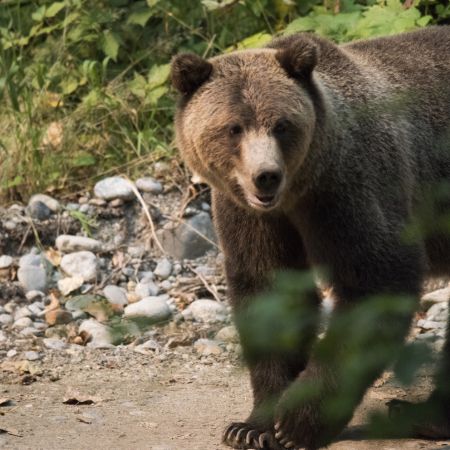
Be aware of the wildlife in the area you’ll be exploring. This knowledge will help you take necessary precautions to protect yourself from potential danger and ensure a safe and enjoyable experience in the great outdoors.
Understanding local wildlife enhances your appreciation for the environment and helps you avoid potentially dangerous encounters with animals such as bears, snakes, or mountain lions. Here are some tips on how to stay safe around wildlife while hiking:
- Research ahead: Before embarking on your hike, research the types of animals that inhabit the area and their habits. Familiarize yourself with any specific guidelines the park ranger or trail managers provide.
- Maintain distance: Always keep a respectful distance from wild animals – never approach them too closely or attempt to feed them. If an animal appears agitated or stressed, back away slowly without turning your back on it.
- Avoid attracting attention: Do not wear strong-smelling perfumes or lotions that may attract curious creatures; opt for unscented products when possible. Additionally, secure all food items in bear-resistant containers if required by regulations.
- Carry deterrents: Consider carrying bear spray or a bear bell in areas with large predators like bears. Invest in sturdy footwear and gaiters for snake-prone regions to minimize risk during accidental encounters.
- Travel in groups: Hiking with others can help deter potential wildlife threats, as animals are less likely to approach larger groups of people. Make noise while hiking to alert nearby animals of your presence and avoid surprising them.
In addition to these precautions, knowing how to react if you encounter wildlife is crucial (handling bear encounters). By staying informed about local nature and following safety guidelines, you’ll be better prepared for any unexpected encounters during your hike.
FAQs
What are the safety considerations for hiking?
To ensure a safe hiking experience, consider the following:
- Understanding the terrain and difficulty level of your hike.
- Checking weather conditions beforehand.
- Packing appropriate gear and supplies.
- Staying on designated trails to avoid getting lost or damaging the environment.
- Being aware of potential wildlife encounters.
What are the top 5 hiking risks?
The top five risks associated with hiking include getting lost due to poor navigation skills or straying from marked trails, injuries from falls or accidents, dehydration, heat stroke or heat exhaustion, hypothermia in cold environments, and encountering dangerous wildlife such as bears or snakes.
What should hikers be cautious of when hiking?
Hikers should be cautious of sudden changes in weather conditions. These unstable surfaces may lead to slips or falls; keeping an adequate distance from cliffs or steep drop-offs, crossing rivers safely using proper techniques, avoiding poisonous plants like poison ivy (USDA Forest Service guide), and respecting local wildlife by maintaining a safe distance.
Is hiking a safe hobby?
Hiking can be a safe hobby when practiced responsibly. By preparing adequately before each hike (researching trail information, bringing essential gear), adhering to Leave No Trace principles, staying within one’s physical limits and skillset while on the trail, monitoring weather conditions closely during hikes (National Weather Service Forecast Office), and knowing how to respond appropriately in emergencies, hikers can minimize risks and enjoy the great outdoors safely.
Final Thoughts
Hiking is more than just a recreational activity; it’s an opportunity to develop a profound connection with nature. However, to fully embrace the wonders of the great outdoors, it’s essential to prioritize safety. As an experienced hiker, I’ve learned through personal experience that even the most minor mishaps can compound into dangerous situations. That’s why planning, communicating your route, and being aware of potential risks are vital. By following these essential hiking safety tips, you can confidently embark on memorable adventures, knowing you’ve taken the necessary precautions. Remember, nature’s beauty is awe-inspiring, but its unpredictability demands respect and preparedness. So, lace up your boots, prepare your backpack, and set out on the trail, knowing that with the right mindset and safety measures, you can fully immerse yourself in the marvels of the great outdoors.
See you on the trail!
